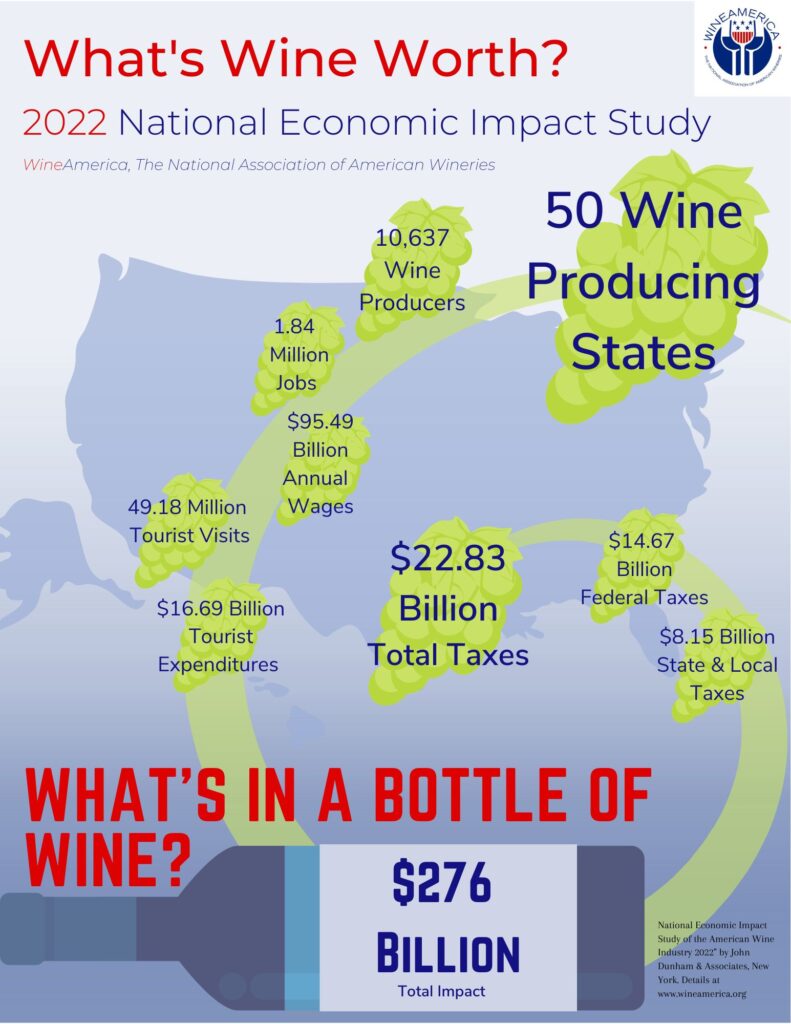Wine Wealth
$276,073,312,700
That’s what wine was worth to the American economy in 2022: $276 Billion!
That’s not sales. It’s total economic impact. And the economic magic of wine is its value-added power from vine to glass.
Wine is produced and consumed in all 50 states, and the $276 billion total economic impact includes…
- 10,637 wine producers
- 1.84 million jobs
- $95 billion in annual wages
- 49 million tourist visits
- $17 billion in tourist expenditures
- $22 billion in total taxes
- $15 billion in federal taxes
- $8 billion in state and local taxes
From vine to glass, wine generates economic benefits on three levels:
Direct: Production, distribution and sales of wine
Supplier: Businesses of many types which supply goods and services to the grape and wine industry
Induced: Communities and local businesses which benefit from the spending by businesses and employees in the other two categories.
Direct Impact includes several sub-categories: Vineyard, Winery, Wholesale, Retail, Association, Research and Education, and Tourism.
The Supplier and Induced categories have the same sub-categories: Agriculture, Mining, Construction, Manufacturing, Wholesale, Retail, Transportation & Communication; Finance, Insurance & Real Estate (FIRE), Business & Personal Services; Travel & Entertainment; and Government.
For all categories in all levels, jobs, wages, and total output add up to the total economic impact.
That’s due to value added from vine to glass. Think of wine from start to finish.
– It begins with rootstock planted in land with trellises, farmed with tractors, plows, harvesters and lots of labor.
– When ripe, the grapes go through stemmer/crushers, presses and filters into tanks and barrels where they’ll ferment and age until ready for consumption–again requiring lots of labor.
– Then the bottling line crews rev up, transferring the magic liquid into bottles or cans that go into other containers like boxes stored in warehouses until the market is ready.
– Truck drivers haul away the case goods to wholesalers, retailers and restaurants, while the advertising and promotion kick in to stimulate sales.
– Meanwhile, there’s all the daily activity at the tasting rooms, including special events and holiday celebrations.
– And let’s not forget all the different types of taxes that must be paid, from payroll to excise and sales.
Wine is capital intensive, labor intensive, and tax intensive—and a goldmine for the American economy.
WineAmerica retained John Dunham & Associates to conduct the National Economic Study of the Wine Industry in 2022. In addition to Methodology and FAQs, it includes detailed data nationally and for all 50 states. For each state and the entire U.S. there are three documents: an Infographic, a detailed data set, and a press release.


